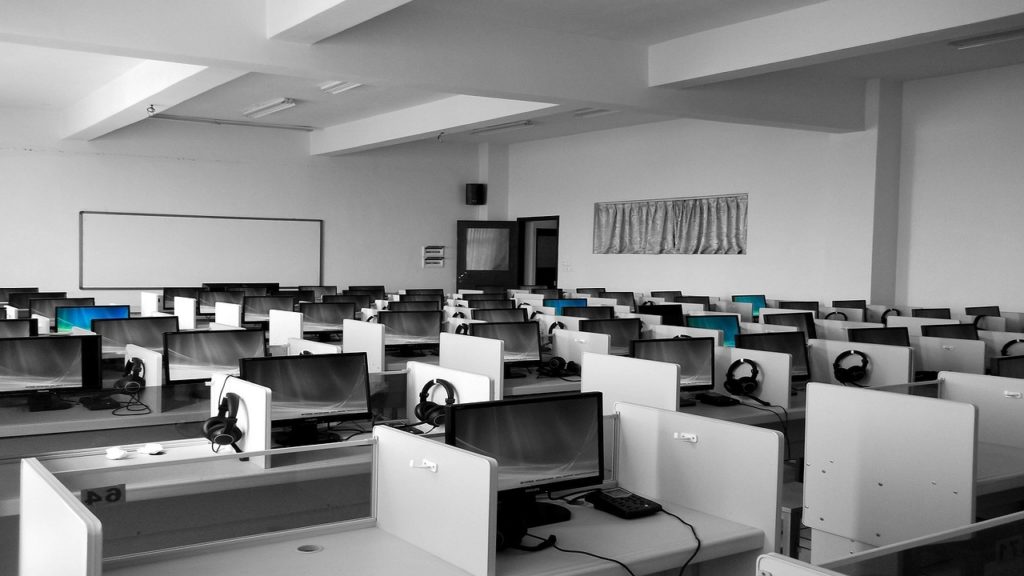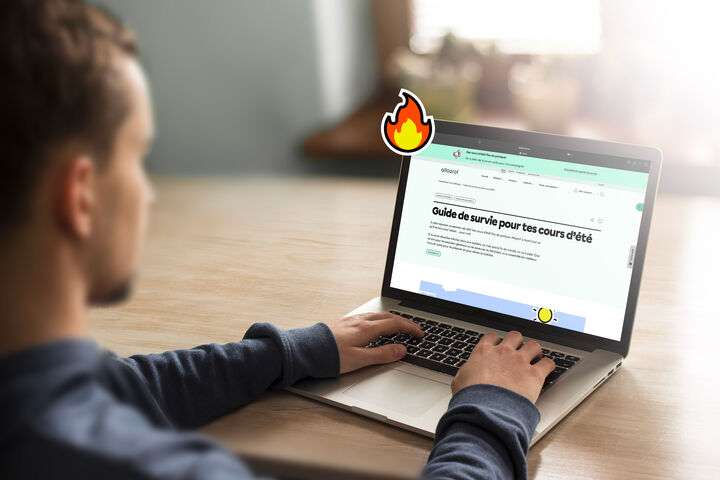Bien qu’il existe encore des disparités entre les milieux scolaires, depuis 2014, on observe « une augmentation notable » de l’usage des technologies dans les écoles primaires et secondaires du Québec. C’est la principale conclusion de la plus récente enquête réalisée par l’Académie de la transformation numérique.
Cette enquête, réalisée dans le cadre du Plan d’action numérique en éducation et en enseignement supérieur, visait à dresser le portrait actuel de l’usage du numérique dans les écoles québécoises. Elle visait également à mesurer le chemin parcouru depuis 2014 alors qu’une étude semblable avait aussi été réalisée. Une troisième collecte de données est prévue au cours de l’année scolaire 2022-2023.
Les résultats sont basés sur les réponses de quelque 600 directeurs d’école qui ont complété un questionnaire en ligne. Le taux de participation des écoles publiques est de 23 % et il est de 21 % du côté des écoles privées. Comme la collecte de données a eu lieu en cours d’année 2020, il est à noter que certains résultats ont pu être influencés par la pandémie.
Internet et les appareils informatiques
- En 2020, 97 % des écoles publiques et 100 % des écoles privées disposaient d’un accès à Internet dans toutes leurs salles de classe.
- 95 % des écoles fournissent maintenant du matériel informatique à chacun de leurs enseignants. En 2014, elles n’étaient que 50 % à le faire.
- Que les équipements informatiques soient fournis ou non par l’école, en moyenne, il y a maintenant un appareil numérique par deux élèves (50 %) dans l’ensemble des écoles.
- Probablement en raison de la pandémie, presque la moitié des écoles (47 %) permettent aujourd’hui à leurs élèves d’apporter le matériel informatique fourni par l’école à la maison. En 2014, c’était le cas seulement d’un peu plus d’une école sur dix (11 %).
- À l’inverse, un nombre significatif d’écoles autorisent maintenant leurs élèves à apporter leurs tablettes et ordinateurs portables personnels à l’école (52 % des écoles secondaires et 77 % des écoles privées).
- La moitié des écoles primaires et secondaires du Québec disposent d’au moins un laboratoire informatique traditionnel (53 %) ou d’un laboratoire créatif (51 %). Quelque 40 % ont aussi un laboratoire de robotique.
Intégration en classe
- En 2020, de plus en plus d’écoles intégraient le numérique dans les apprentissages des élèves dès le préscolaire (76 % contre 67 % en 2014).
- Les enseignants des écoles privées utilisent davantage le numérique en classe que les enseignants des écoles publiques. Alors que 60 % des enseignants des écoles privées passent en moyenne par semaine 7 heures et plus à utiliser le numérique en classe, ce sont 14 % des enseignants des écoles publiques qui en font de même.
- Les enseignants du secondaire utilisent aussi davantage le numérique que ceux du préscolaire et du primaire.
- Par ailleurs, la presque totalité des directions d’école et des enseignants (98 %) utilisent désormais le numérique pour communiquer avec les parents des élèves, une nette augmentation depuis 2014 (82 %).
Compétences numériques
- Selon leur propre perception, 79 % des directeurs d’écoles privées se disent très à l’aise avec l’utilisation du numérique. Ils ne sont que 44 % dans les écoles publiques.
- La différence entre les écoles privées et publiques est aussi marquée pour les enseignants. Selon les résultats, 53 % des enseignants des écoles privées seraient à très à l’aise avec le numérique, comparativement à 15 % de ceux des écoles publiques.
- Par ailleurs, dans l’ensemble, les répondants estiment qu’environ 10 % des enseignants auraient encore une connaissance très limitée du numérique et l’intégreraient difficilement dans leur enseignement.
- De même, 27 % des enseignants utiliseraient le numérique simplement pour reproduire les mêmes tâches qu’avant, mais à l’aide du numérique (ex. écrire au clavier plutôt qu’avec un crayon).
- Finalement, 25 % des enseignants des écoles privées et 15 % des enseignants des écoles publiques l’utiliseraient pour réaliser de nouvelles tâches qui étaient impossibles avant l’apparition du numérique (ex. faire produire un document collaboratif par les élèves à l’aide d’un outil en ligne).
Développement professionnel
- De façon générale, les ressources disponibles pour améliorer la compétence numérique des enseignants étaient plus accessibles en 2020 qu’en 2014.
- En 2020, les écoles offrent aux enseignants des ressources pour améliorer leur compétence numérique, par exemple des formations (99 %), de l’accompagnement, du coaching ou du mentorat (87 %), du temps de libération dans leur horaire pour améliorer leur compétence numérique (63 %).
- Fait intéressant : les écoles publiques (64 %) sont relativement plus nombreuses que les écoles privées (49 %) à libérer du temps dans l’horaire de leurs enseignants pour améliorer leur compétence numérique.
Lien avec le programme de formation
- Seulement un directeur d’école sur trois (34 %) considère le numérique comme étant un enjeu très prioritaire pour enseigner et faire réussir le programme de formation de l’école québécoise (PFÉQ).
- De plus, selon le point de vue de 16 % des directeurs d’école interrogés, plus de 50 % des enseignants de leur école trouvent difficile d’intégrer le numérique dans leurs pratiques en raison des exigences du programme de formation de l’école québécoise (PFÉQ).
L’utilisation du numérique est en croissance. Les résultats de l’enquête démontrent que le matériel informatique est bien disponible et que plusieurs projets sont en cours. Néanmoins, des disparités importantes sont observées d’une école à l’autre, notamment entre celles du secteur public et celles du secteur privé. Le développement des compétences numériques de tous demeure au cœur des préoccupations et devient prioritaire.






